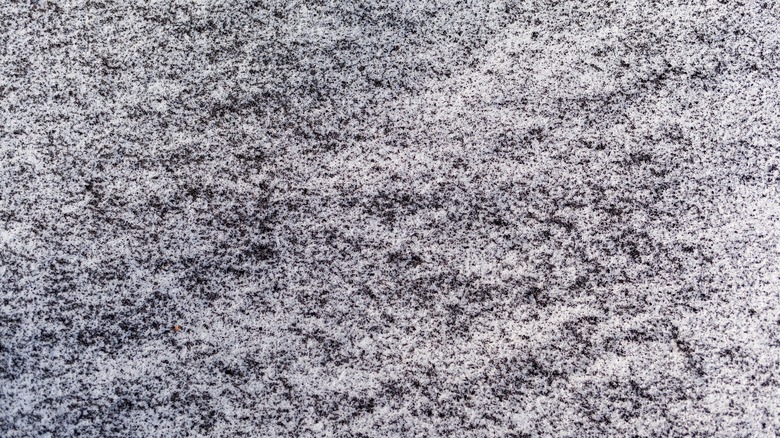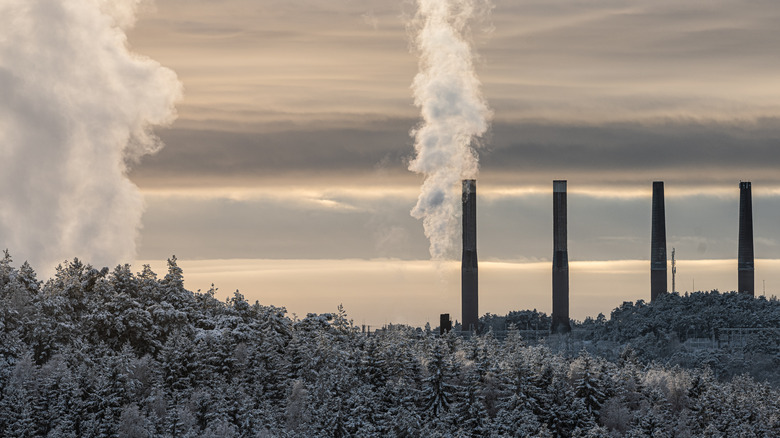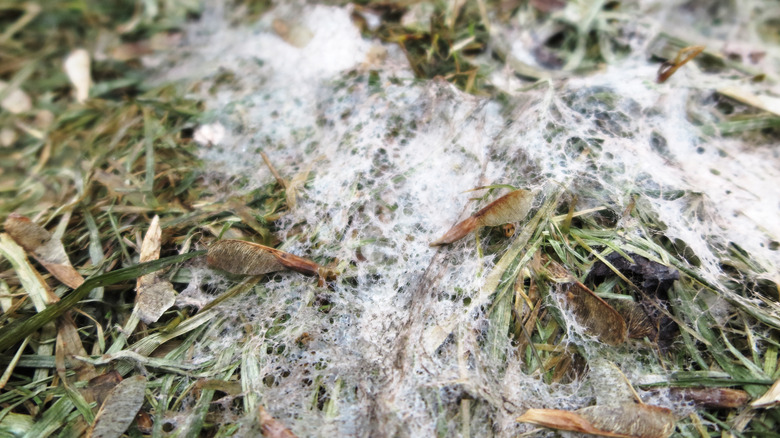What It Means If You See Gray And Black Snow On The Ground
A white blanket of snow seems to quiet even the busiest cities and just make everything look inviting. Perhaps it's a good reason why some of us are seekers of four-season climates and enjoy when the cold months roll around. But beyond the beauty of white winter snow ... have you ever encountered blue snow, or for that matter even pink snow? And what about gray and black precipitation? Well, this is not your imagination, as different-colored snow does exist. In fact, this phenomenon can point to a number of issues including algae growth. Dark-colored snow specifically can be an unfortunate warning sign of air pollution and point to the overall decline of the planet's health. In fact, scientists believe that black snow could be directly related to climate change. Gray snow, on the other hand, can point to mold growth.
As far as if you should be concerned if you see a thick blanket of black or gray snow when taking care of snow and ice outside — the answer is a resounding yes. It usually indicates possible air quality issues or pollution. The greater solution to avoiding these issues is really a proactive, collective one — to live more sustainably and implement low-carbon solutions worldwide. If the cause of gray snow is mold, there are some more practical steps you can take to avoid this, such as mowing regularly, dethatching, and using a preventative fungicide.
Black snow is a sign of pollution
It's no surprise that dark-colored snow is commonly found in heavily-polluted or industrial areas. It's not a natural occurrence and mostly happens when precipitation becomes mixed in with soot or petroleum-based contaminants from nearby industrial plants that burn fossil fuels, wood, or coal for energy. When falling from the sky, snow can absorb the pollutants in the air and become stained by the time it reaches the ground. It can also be caused by leftover dust particles from large-scale forest fires. The presence of black snow can be an indicator of health risks in the area, because the contaminants present in the air throughout the year can hold heavy metals and toxins, things we shouldn't breathe in. Further, black snow absorbs more heat causing it to melt faster, which is a concern for the environment, too, as it could be a cause of climate change.
A more prevalent way snow turns black is when it stays on the ground for a while and collects grime from dirt, car exhausts, and oil, as well as other pollutants. This is a pretty common occurrence along city roads and streets. What's concerning about this is that once the snow melts, the pollution can end up in streams and rivers as well as aquifers underground and can be harmful to nature.
Gray snow mold appears during long winters
Another concern is when the snow starts to melt and you notice that the thin snow layer mixed in with the grass is a gray color. In this case, it might be gray snow mold, which is a common fungal disease that occurs during periods of prolonged snow cover. It impacts cool-season grasses, and in worst-case scenarios can kill large sections of your lawn. The patches can have a light tan appearance at first and then fade to a light gray color. Once the snow melts, you will notice grayish-brown infection centers near the ground surface.
Shaded lawns are more prone to gray snow mold, and places where there's routine snow plowing or drifting snow are commonly affected as well. You can expect the gray-looking mold to go away when the lawn begins to dry out, which causes the fungal growth to slow down. However, if you want to speed up the process, there are ways to treat your lawn for snow mold. For instance, you can remove dead and matted grass underneath the snow cover by lightly raking, which will promote air circulation and drying.


